Any newcomer to saltwater fishing is likely to struggle with saltwater fish identification for a while. It can all be a bit of a mystery at first, particularly with those fishes that look similar but are in fact different species. Is it a flounder or a plaice for example?
And our novice saltwater angler will also want to know if it's a dangerous fish in any way. Is it a poisonous fish to touch, and am I risking ciguatera poisoning if I eat it?
So yes, correct saltwater fish identification is pretty important for these reasons alone, so these are the sort of issues that we'll be taking a look at here.
There are thousands of different species of saltwater fish, the vast majority of which are either too small or live too deep to be of interest to sport fishermen.
Let's get back to the fish that fall within the scope of this website, starting with...
Cartilaginous Fish
This group of saltwater fish include sharks, skates and rays and are differ from true fishes in that:~- Their skeleton is built of cartilage, not bones.
- Their skin is not made up of scales, but is rough - much like sandpaper - to the touch.
Sharks
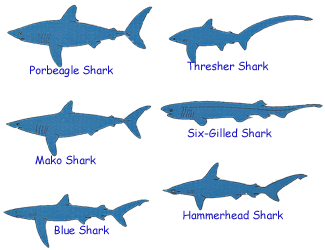
As shown here, they're the Mako Shark, Porbeagle Shark, Blue Shark, Hammerhead Shark and Thresher Shark.
Read more about the various types of sharks...
Artwork courtesy of Osprey Publishing Ltd
Skates and Rays
So what's the difference between skates and rays? A 'Mermaid's Purse'
A 'Mermaid's Purse'Certain types of shark, the lesser-spotted dogfish for one, also use this approach to protect their young from hungry predators.
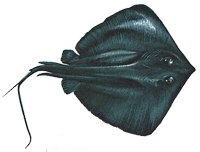 Sting Ray
Sting RayA skate's tail is more stocky than that of a ray and doesn't have a stinging spine.
Read more about skates and rays...
Artwork courtesy of Gyldendal Norsk Forlag
Incidentally, For several years now I've relied on this excellent paperback for saltwater fish identification.
There's more than 1,000 different species described, including including information on range and habitat such as depths, bottom types, water temperatures, and salinity.All valuable information for those of us who seek to catch them!
The almost 1,100 illustrations use the Peterson Saltwater Fish Identification System for quick, accurate field identification.
It's very reasonably priced, and will be shipped free of charge, wherever you live in the world!
Bony Fish
The other main group of saltwater fishes are classed as bony fishes, which are built around a traditional skeleton which supports the other parts of a fish.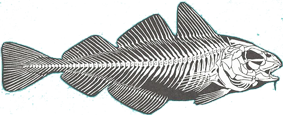 Skeleton of a Bony Fish
Skeleton of a Bony FishRound Fish
Other round fish not mentioned in the previous paragraph include the sea bass, mackerel, bream, mullet, wrasse, coalfish and pollock. Pollock and coalfish are pictured here. They're clearly very similar, each sporting three dorsal fins and two anal fins. Pollock
Pollock(also pollack)
The pollock's lateral line is dark and has a pronounced curve over the pectoral fin.
 Coalfish
Coalfish(also saithe)
Flatfish
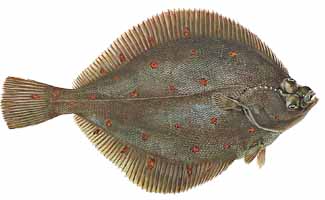 Plaice
PlaiceIt is only during the course of their development that they show a marked preference for skulking around on the seabed.
To make this horizontal lifestyle a success, the eye which would otherwise find itself staring constantly at the seabed moves around to the upperside where it can be of more use, and the swimbladder is absorbed to enable the flatfish to stay put on the seabed. The underside of flatfishes is usually a pale white/grey - almost opaque - and the topside darkly pigmented.
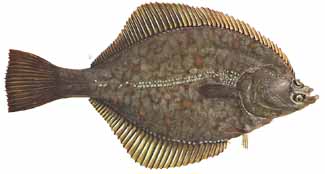 Flounder
FlounderBut on other flatfish species such as the turbot, brill, megrim and topknot the eyes are on the left hand side.
Artwork courtesy of Gyldendal Norsk Forlag
Source: Go Salwater Fishing
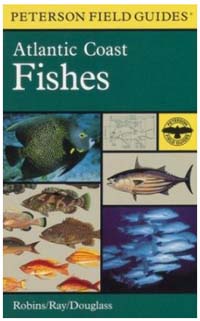
Find out the most beautiful fishes for your tank and most reliable coupons to save your money as well saltwater fish.
ReplyDelete